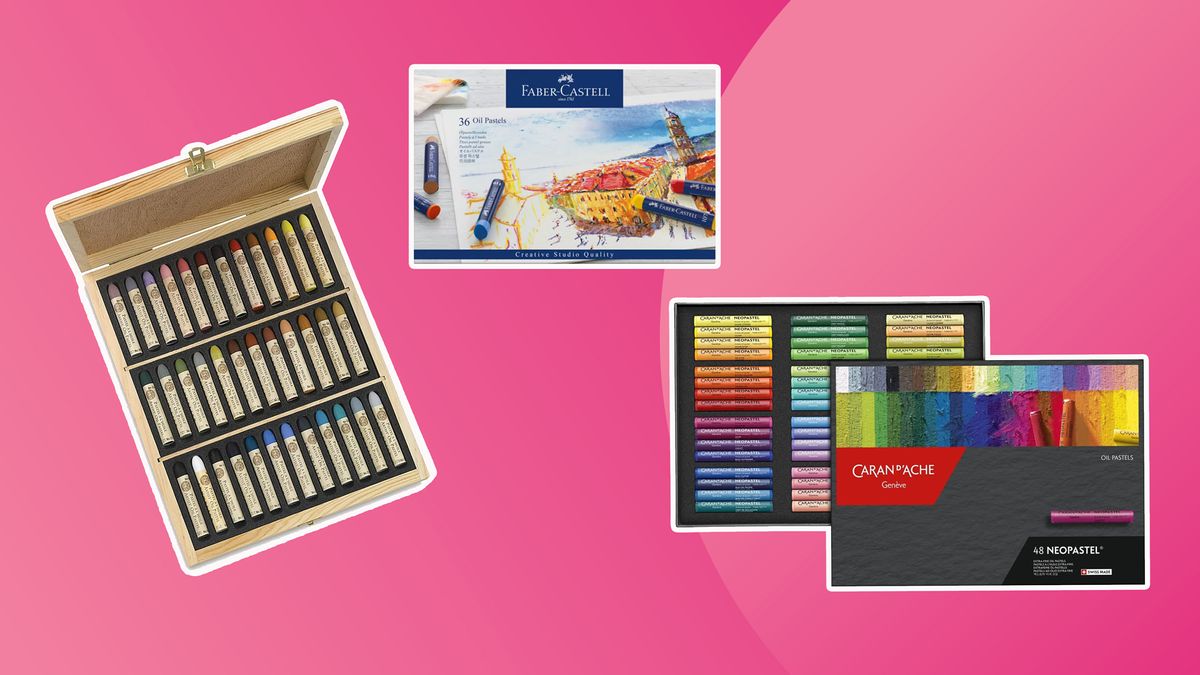Oil pastels are an under-rated medium and in my opinion, should be much more popular. They are instantly useable and versatile, have brilliant colour ranges and can be great used with mixed media. On this page, I’ve gathered a range of oil pastels based on my experience with the products – I tested them all using a range of styles and techniques.
In my tests, I evaluated the oil pastels in terms of hardness, ease of blending and application and lightfastness, considering how they compare with each other. If you need further pointers, see the questions section at the bottom of this guide.
The best oil pastels available now
Why you can trust Creative Bloq
Our expert reviewers spend hours testing and comparing products and services so you can choose the best for you. Find out more about how we test.
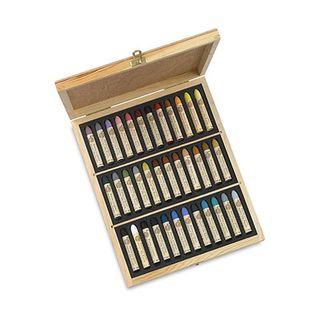 Professional pick
Professional pick
Quality: professional
Quantity: 1–120
Softness: soft
These are the top oil pastels on the market. They were originally developed in France in 1949 at the request of Picasso, who wanted an easily applied colour-fast medium for his drawings. The brand has been going strong ever since. The large range of colours all have high lightfastness established over a long period of time. Special bindings make these richly pigmented, and they are the softest oil pastels you can buy. They have a lipstick-like quality which means they are smooth in application and will go on your surface easily. Blending qualities are exceptional and great subtlety of effects can be achieved.
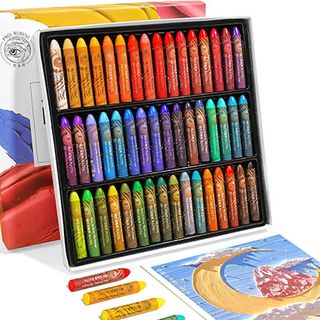 Beginner friendly
Beginner friendly
Quality: intermediate
Quantity: 4-72
Softness: soft
Paul Rubens oil pastels originate in China, and they are a reasonably priced set of oil pastels suitable for beginners. Having said that, most of them are equal in softness to my top pick and this makes blending with them very easy, although some can leave a slightly oily residue. There is inevitably a little less consistency in softness because of the more economical manufacturing process. There is no information on lightfastness, but a good sign is that they have strong, saturated colours. Having 72 colours in the range also helps too. However, you can’t buy individual colour sticks, except for small boxes of white.
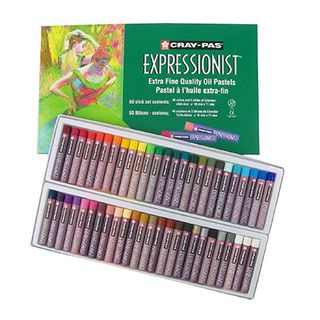 Value choice
Value choice
Quality: intermediate
Quantity: 12–48
Softness: medium/soft
These economical oil pastels are still relatively soft and therefore blend well. They have a good reputation as a starter brand. The colours are good and excellent lightfastness is claimed but it will be slightly less than the top oil pastels as there will be more filler. This means that the colours are slightly less intense, but this is relative with oil pastels as they are generally very heavy in proportion of pigment right down to the most economical ranges.
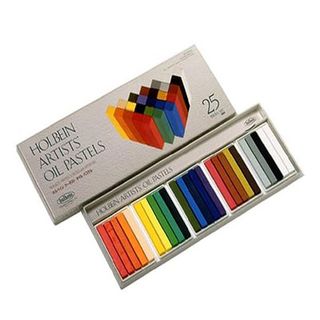 Colourful range
Colourful range
Quality: professional
Quantity: 1–140
Softness: soft
This is the second of the professional grade oil pastels reviewed here and it has the highest range of colours. They are a similar top price to the Sennelier but differ in shape, coming in rectangular sticks. This can help get thinner lines and allows you to use the side of the stick for wide strokes as there is no paper sleeve on them. You must be clean in handling these pastels as the colour transfers to the fingers easily. The higher price is a marker of good lightfastness, and their blending ability is again outstanding.
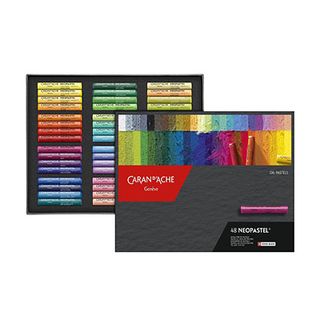 Great blending
Great blending
Quality: professional
Quantity: 1 – 96
Softness: Soft
Caran d’Ache Neopastels come from Switzerland and have a large range of strong colours. They blend very well and have excellent lightfastness. They are slightly cheaper than the other two professional makes, which would make them a good starter choice if you wanted better than intermediate quality as your initial experience of the medium. They are slightly harder than the Holbein and Sennelier brands and are available to buy in single sticks.
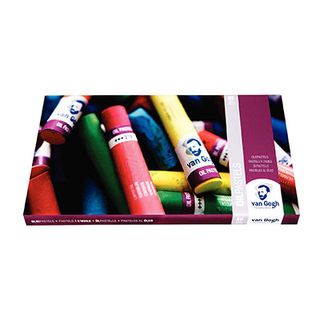 Nice and soft
Nice and soft
Quality: intermediate
Quantity:1 – 60
Softness: soft/medium
With a range of 60 colours and an affordable price, these Van Gogh oil pastels are an attractive buy for beginners. They are still relatively soft (but not quite as soft as the three professional brands) and therefore blend well. The colours are high in pigment and have a three-star 100-year lightfastness rating. They have the advantage of being available as single sticks from some retailers.
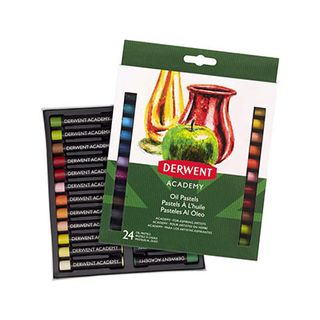 Mid-range
Mid-range
Quality: intermediate
Quantity: 12–24
Softness: medium
The lower price of this range reflects their cheaper mix of fillers and pigment. Derwent doesn’t give lightfastness information on this set. Blending is as reasonable as you would expect with a medium hard oil pastel. The only drawback with this range is its lack of colours (only 24) and therefore you may need to supplement with individual sticks of others.
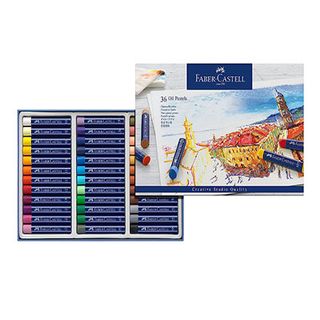 All-rounder
All-rounder
Quality: intermediate
Quantity: 3–60
Softness: medium
This is another reasonably priced beginner’s option that has an attractive range of colours and a good ability to blend. Faber Castell does not produce lightfastness statistics for its oil pastels, which it does for its many pencil products, but the colours are intense and blend reasonably well. The firm is obviously aware of the need for longevity of colour.
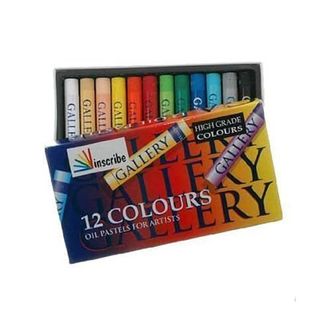 Cheap option
Cheap option
Quality: intermediate
Quantity: 12–72
Softness: medium
Inscribe can be found as a budget set of oil pastels in many art shops and they claim high pigmentation and good lightfastness. This places them in the same category as the Faber Castell and Van Gogh oil pastels and they’re a particularly popular option in the UK.
